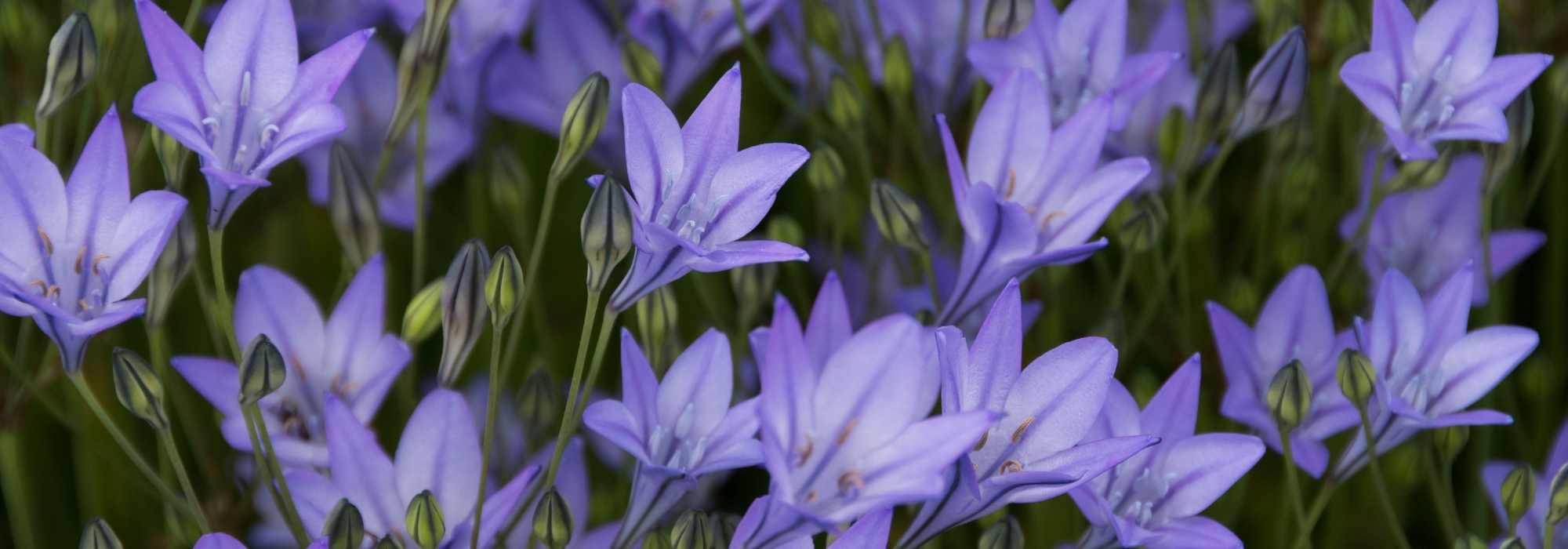
Triteleia - Brodiaea: Planting, Growing and Caring
Contents
Triteleias in a nutshell
- Triteleias produce star-shaped flowers during the summer
- Triteleia flowers come in blue, white, pink, or yellow
- They are cormous plants, a type of bulb
- Triteleias love sunny spots and very well-drained, stony, or sandy soil
- Triteleias can be planted in rockeries, dry gardens, or even pots
The word from our expert
Triteleias (or Brodiaea) produce stunning star-shaped flowers. The effect is fabulous, especially when planted en masse. It’s then a cloud of blue, white, or pink stars, depending on the variety, that greets you between June and August. By autumn, the plant disappears entirely underground, only to reappear the following spring. Beware of careless digging if you’ve forgotten where they are!
The Triteleia laxa often comes to mind, the typical species and its many derived varieties, with shades ranging from blue to sometimes double flowers like Triteleia ‘Aquarius’. Let’s not forget, however, the Triteleia ixioides, with its cream-yellow flowers striped with dark brown. A marvel!
Triteleias thrive in full sun, or partial shade in the southern part of the country, within a rockery or a dry garden.
Be careful—if, like me, your soil is terribly heavy and wet, you’ll need to plant them in sand (yes, literally!) or, more simply, keep them in pots. Otherwise, they won’t last long… Triteleias despise winter moisture!
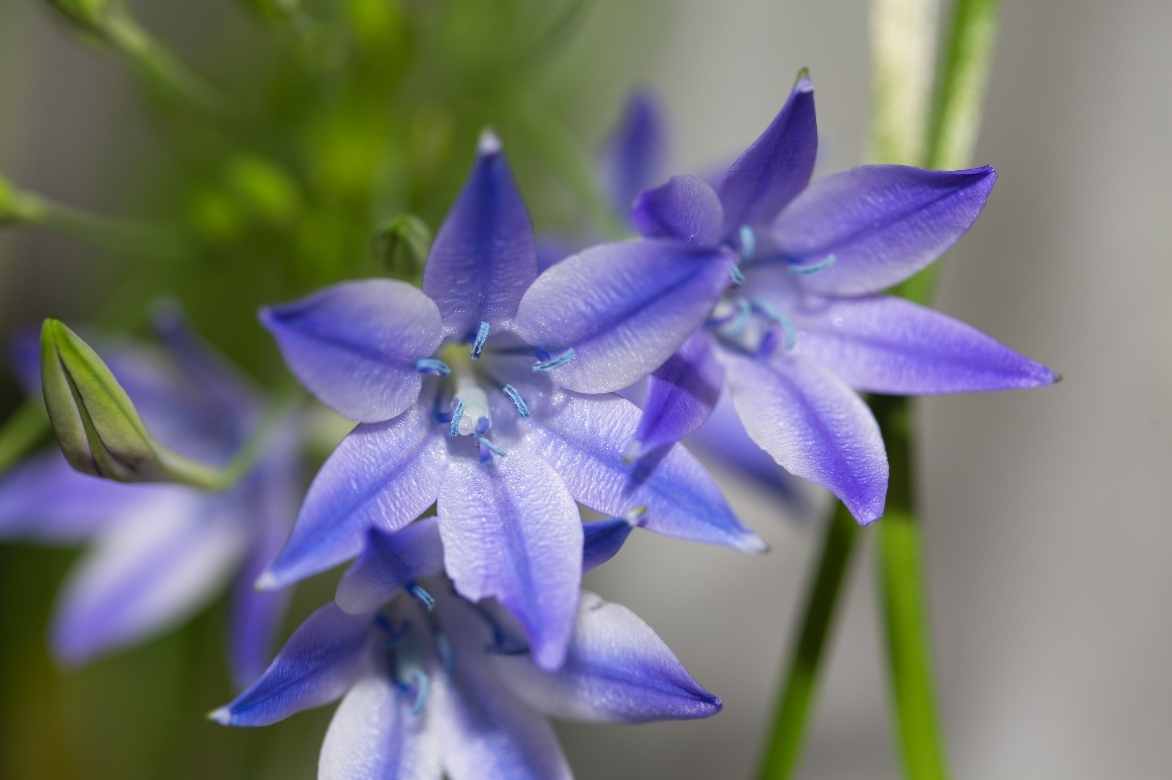
Triteleia laxa
Botany and description
Botanical data
- Latin name Triteleia sp. (or Brodiae sp.)
- Family Asparagaceae
- Common name Triteleia (sometimes Brodiaea)
- Flowering May to August
- Height 25 to 45 cm
- Exposure sun or partial shade
- Soil type very well-draining, stony or sandy
- Hardiness -10° C
Triteleias are bulbous plants belonging to the Asparagaceae family (according to the latest phylogenetic classification) and the Brodiaeoideae subfamily. Moreover, it is not uncommon to still encounter the genus name Brodiaea instead of Triteleia in literature or commerce. Beware of confusion!
The genus name Triteleia comes from Greek: “Treis” (three) and “Teleios” (perfect), referring to the flower’s regular star-shaped form. In California, Triteleia laxa is nicknamed “Ithuriel’s Spear,” after one of the angels in “Paradise Lost,” a poem by John Milton (1667).
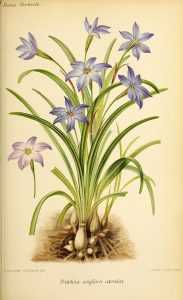
Triteleia uniflora, botanical plate, circa 1850
The various species of Triteleia are native to the dry prairies and woodlands of the western United States.
The Triteleia genus includes around twenty species, the most well-known and cultivated being Triteleia laxa.
Triteleias are more accurately cormous plants. Corms are swollen underground stem parts, serving as nutrient storage organs resembling bulbs. This is why Triteleias are classified as “bulbous” plants.
The deciduous foliage appears in spring, forming a clump of lanceolate leaves, slender, 20 to 30 cm long, and green in colour. The leaves wilt and yellow, or even dry up, as flowering begins. The plant completely disappears after flowering.
Flowering starts as early as May for Triteleia laxa and Triteleia ixioides, continuing until August for some varieties such as Triteleia ‘Rudy’ or Triteleia ‘Queen Fabiola’. Each corm produces large umbels of around twenty blue, white (Triteleia ‘Silver Queen’), pink, or even yellow flowers (in Triteleia ixioides). The tubular flowers open into star shapes and are borne on slender, rigid stems up to 50 cm tall. The flowers can be used in bouquets.
If they thrive, Triteleias naturalise easily, forming beautiful colonies over the years. They are cultivated in rockeries, dry gardens, and even in pots.
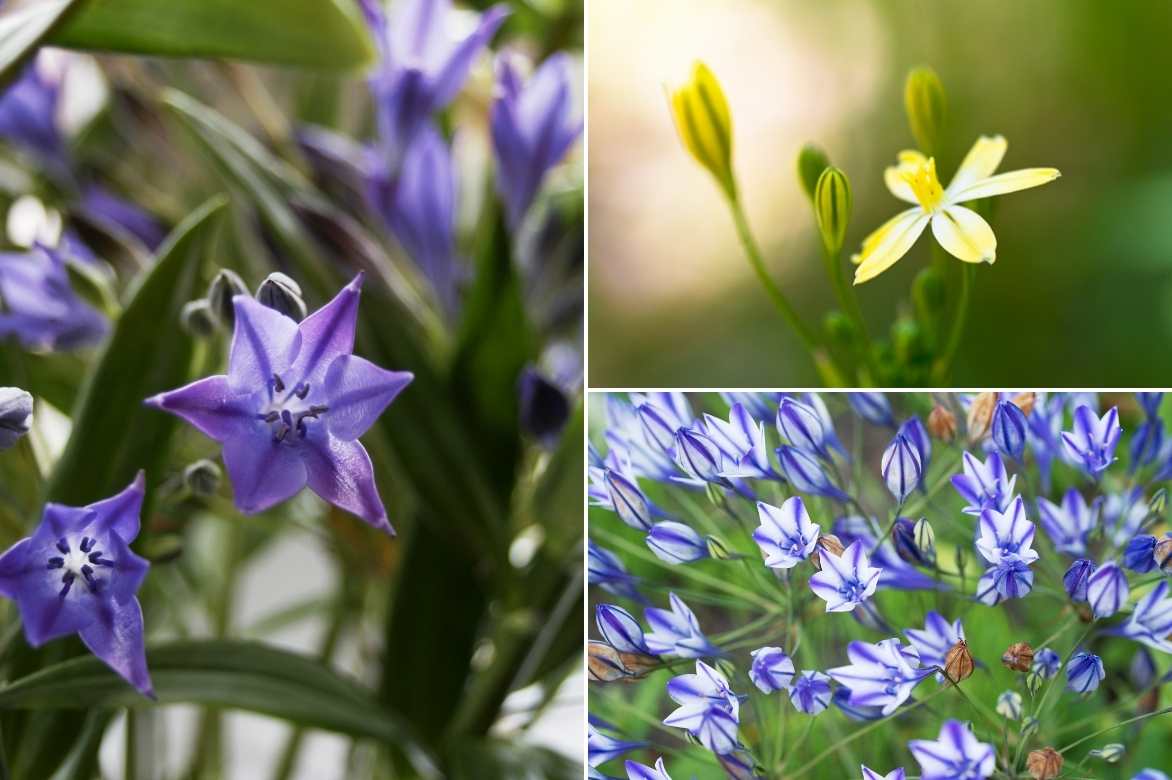
Blue Triteleia laxa, and top right Triteleia ixioides
Read also
10 summer bulbs to plant in springOur most beautiful varieties
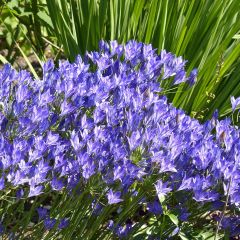
Triteleia laxa
- Flowering time June, July
- Height at maturity 35 cm
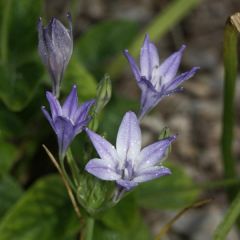
Triteleia laxa Queen Fabiola
- Flowering time August, September
- Height at maturity 35 cm
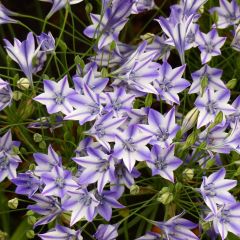
Triteleia Rudy
- Flowering time August, September
- Height at maturity 40 cm
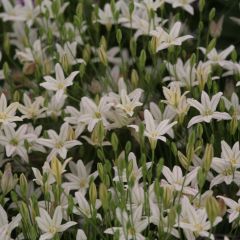
Triteleia laxa Silver Queen
- Flowering time June, July
- Height at maturity 45 cm
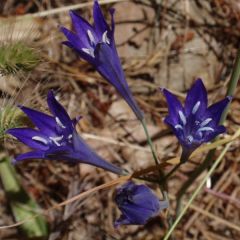
Triteleia Corrina
- Flowering time August, September
- Height at maturity 25 cm
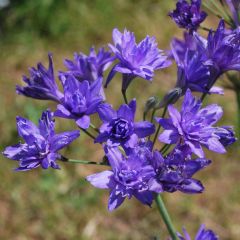
Triteleia Aquarius
- Flowering time July, August
- Height at maturity 40 cm
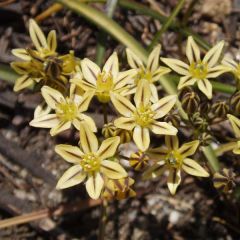
Triteleia ixioides 'Starlight'
- Flowering time June
- Height at maturity 30 cm
Discover other Triteleia
View all →Available in 0 sizes
Available in 1 sizes
Available in 1 sizes
Available in 1 sizes
Available in 1 sizes
Available in 1 sizes
Available in 1 sizes
Available in 1 sizes
Available in 1 sizes
Planting Triteleias
Where to Plant?
Triteleias should be planted in full sun or partial shade in the southern part of France. In cooler climates, ensure your triteleias are well protected from cold and wind: for example, near a south-facing wall.
The soil should be fertile but, most importantly, light and well-drained. The ground must remain moist during the growing season but dry during the dormant period in winter. Planting Triteleia corms directly in sand significantly improves the plant’s hardiness.
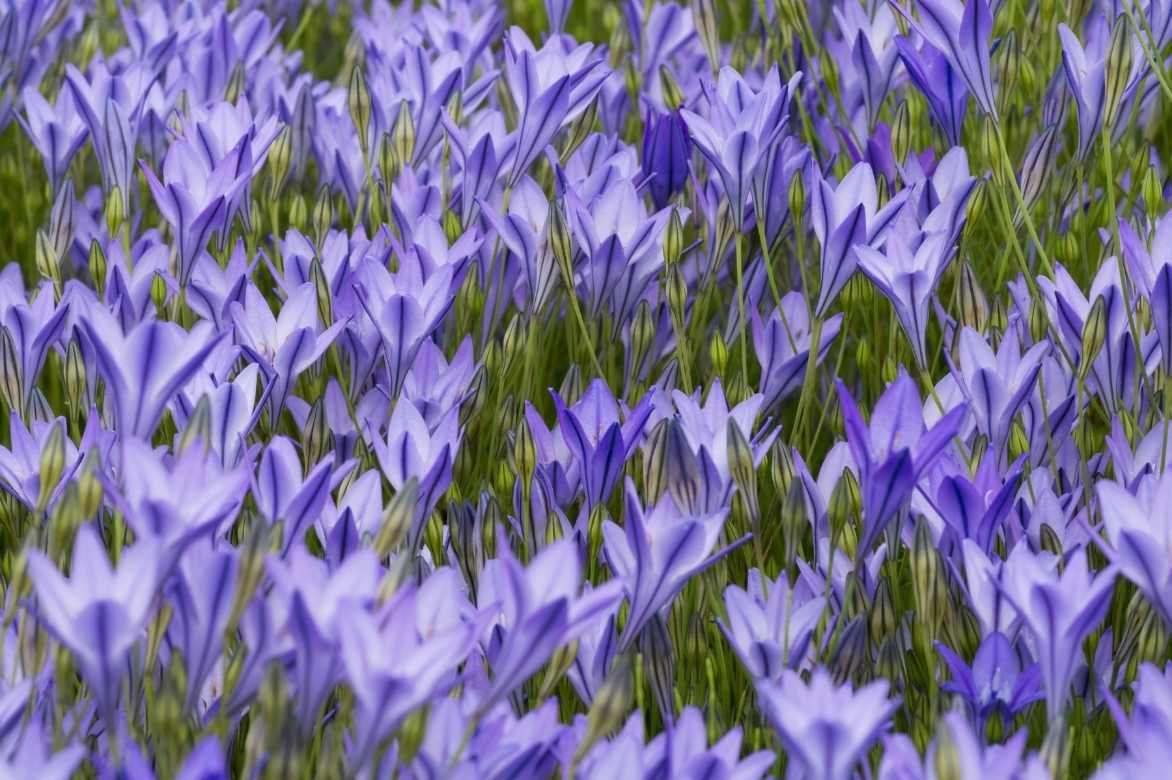
Triteleias look stunning when planted en masse
When to Plant
Triteleias can be planted in autumn (in October), but spring is the best time: planting is ideally done between March and April.
How to Plant?
In the ground:
- Loosen the soil to a depth of about 10 centimetres;
- Add well-rotted compost, sand, or even some gravel to lighten the soil and improve drainage;
- Plant the corms (bulbs) 10 cm deep, at a rate of 20 corms per square metre;
- Cover with mulch in winter to protect the corms from severe frost.
In pots:
- Use a terracotta pot with a drainage hole at the bottom;
- Fill it with a light substrate such as Mediterranean plant compost;
- Plant the corms (bulbs) 10 cm deep;
- Triteleias in pots are more susceptible to cold than those in the ground: only move the pot outdoors once all risk of frost has passed.
Read also
How to protect bulbs from rodents?Maintenance
Maintenance is limited to watering during the growing season (when the foliage appears) and only if the soil is dry. In pots, water every two days, still during the growing season.
During the dormancy phase, when the plant seems to have disappeared, the soil or substrate should remain dry.
If your triteleias are grown in pots, bring them indoors to a frost-free location during winter.
Note: during dormancy, when the triteleias have completely disappeared underground, there is a risk of damaging the corms with a tool. Remember to place markers to avoid this.
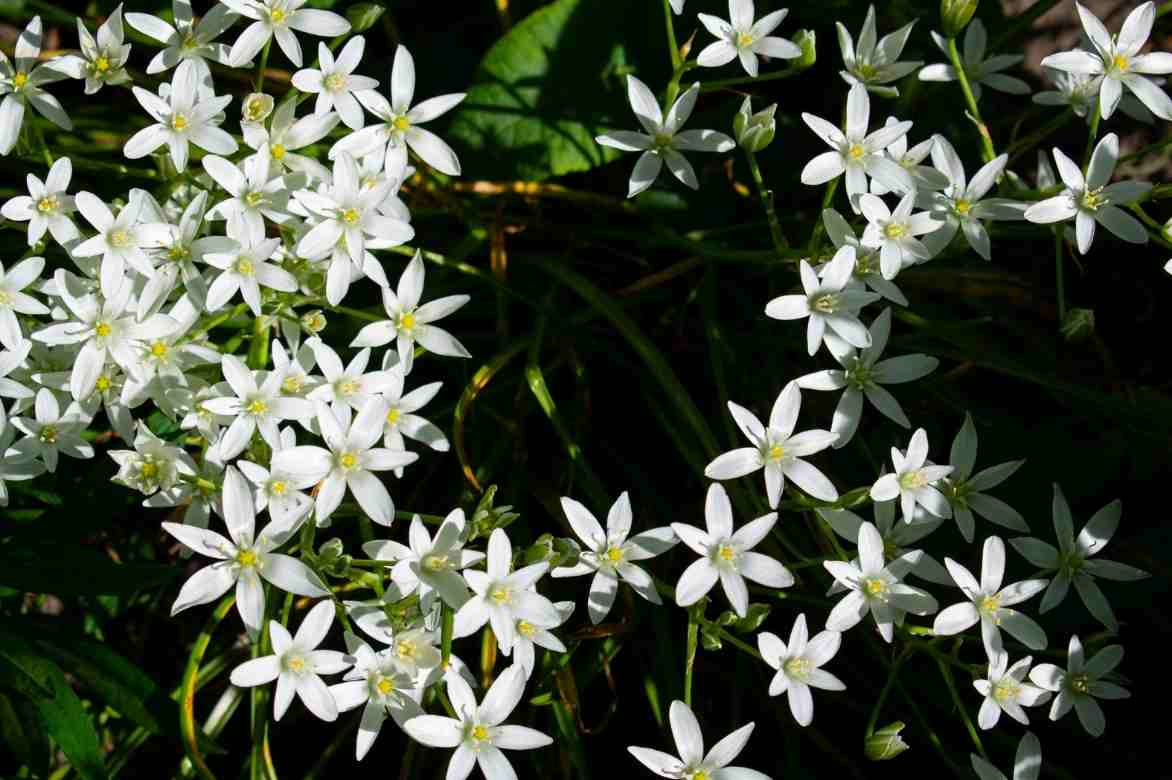
Triteleia uniflora
Diseases and Pests
Triteleias are not affected by any diseases or pests. The only thing they fear is winter moisture.
Multiplication
By sowing
It is possible, though very time-consuming, to propagate your triteleias by sowing. Simply collect the ripe seeds in summer and sow them in a well-draining substrate (half sowing compost and half river sand) at a temperature of around 15°C.
The first flowers will only appear after 4 years of cultivation. Impatient gardeners, beware!
Or more quickly and easily…
Small corms develop around the planted triteleia corms. You can either leave them undisturbed to allow a carpet of triteleias to form, or dig a little around the area to retrieve the small corms and relocate them elsewhere in spring.
Association
The issue with Triteleias is that their foliage becomes unsightly during flowering. Therefore, we aim to conceal it with low-growing plants. However, these companion plants must thrive under the same growing conditions as our Triteleias: sun, very well-drained soil, but cool in summer.
What if we mixed a few different Triteleias? Blues, yellows, and whites streaked with blue. For instance, the simple Triteleia laxa (the type species) with violet-blue flowers, the Triteleia ‘Rudy’ with its very unique blue and white flowers, and the Triteleia ixioides ‘Starlight’ with its creamy-yellow flowers, which will contrast beautifully with the cool tones of the other two.
To accompany them, let’s stick to the blue and yellow palette with a few other perennials. Yellow-green foliage and blue flowers with one or two Gentiana cruciata, a bit finicky but also fond of well-drained and cool soils during flowering. Let’s stay with “blue flowers” by adding a few Amsonia ‘Blue Ice’, whose star-shaped blue flowers will echo those of the Triteleias. The Carex oshimensis ‘Evergold’ remains a reliable choice and will enhance the blue blooms with its green foliage adorned with a broad cream stripe. Finally, we’ll try a yellow-flowering ground cover like the Helianthemum ‘Ben Fhada’, which will serve as a perfect frame for the Triteleias’ flowers.
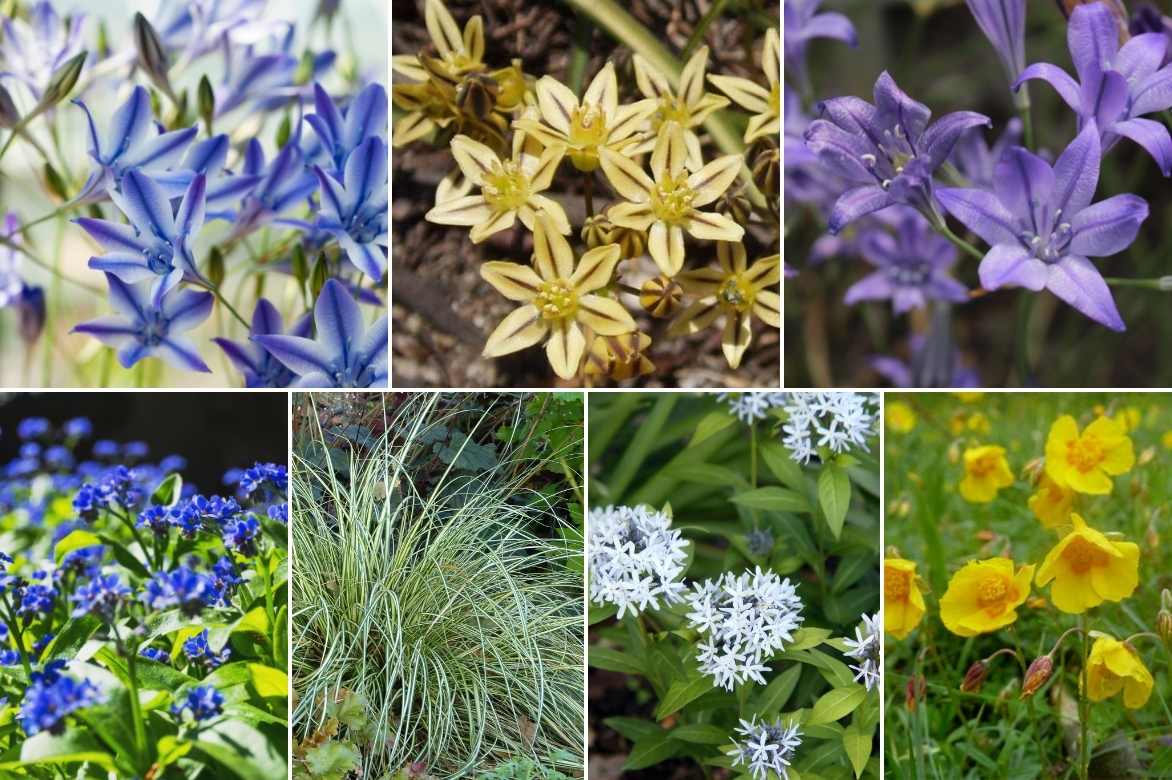
Triteleia ‘Rudy’, Triteleia ‘Starlight’, Triteleia laxa beautifully complemented: Gentiana cruciata, Carex oshimensis ‘Evergold’, Amsonia ‘Blue Ice’, and Helianthemum ‘Ben Fhada’
Useful resources
- Discover our triteleias in our online nursery.
- Learn how to pair triteleias.
- Subscribe!
- Contents































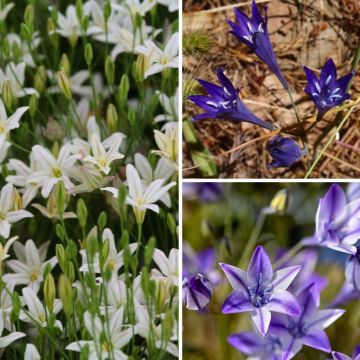




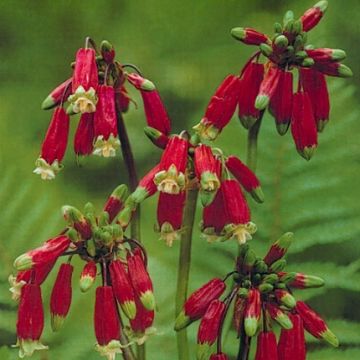



Comments